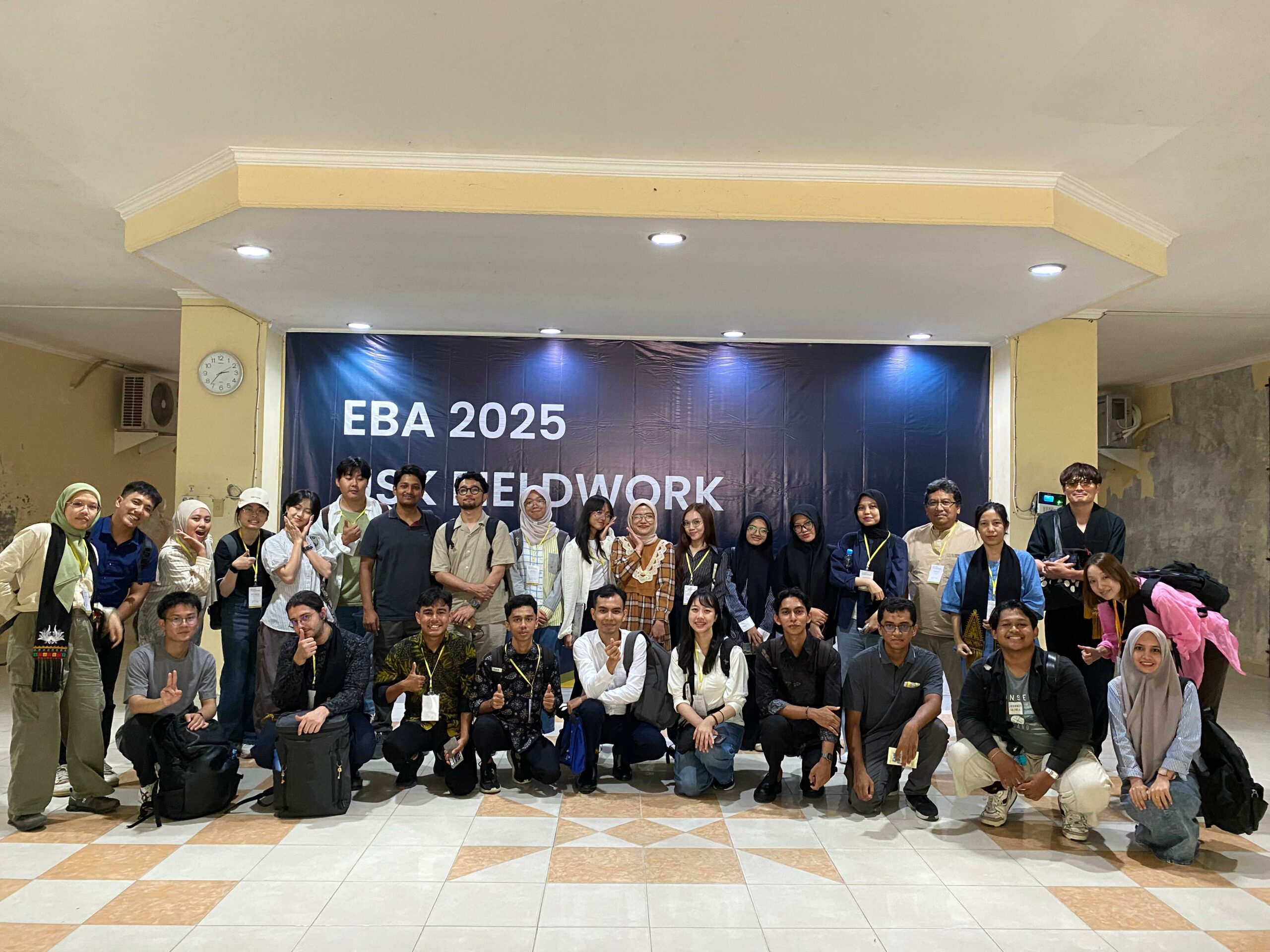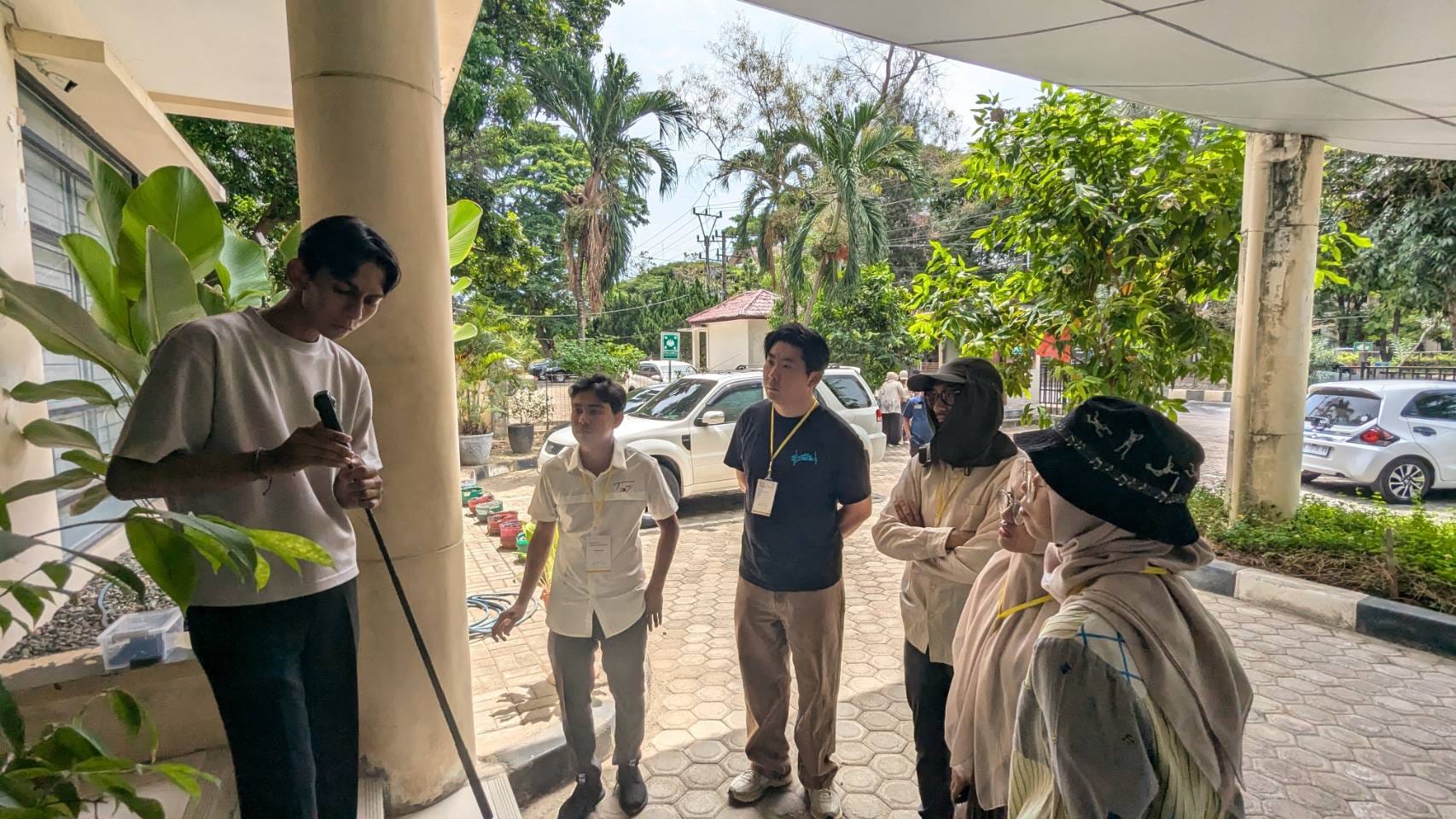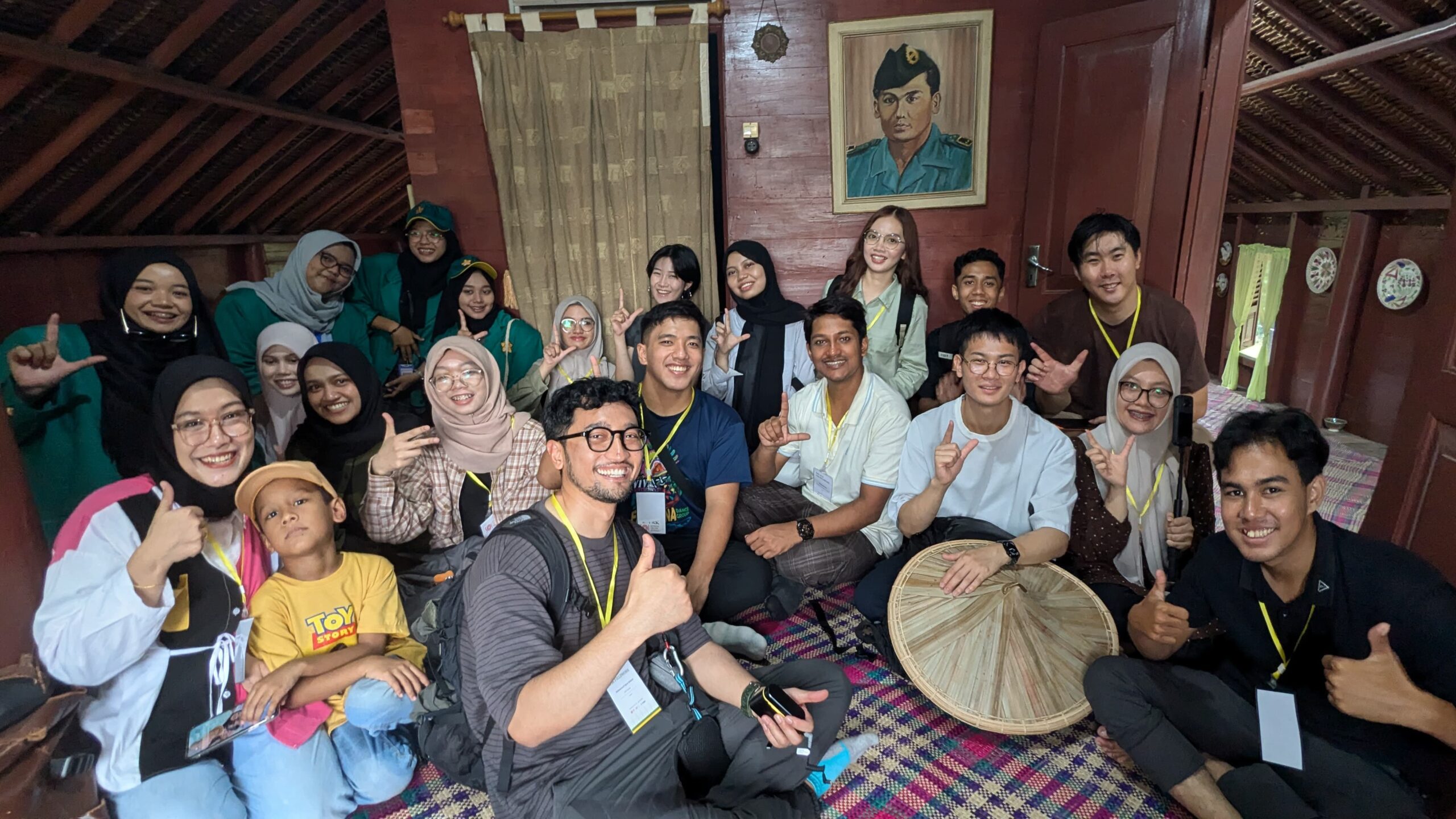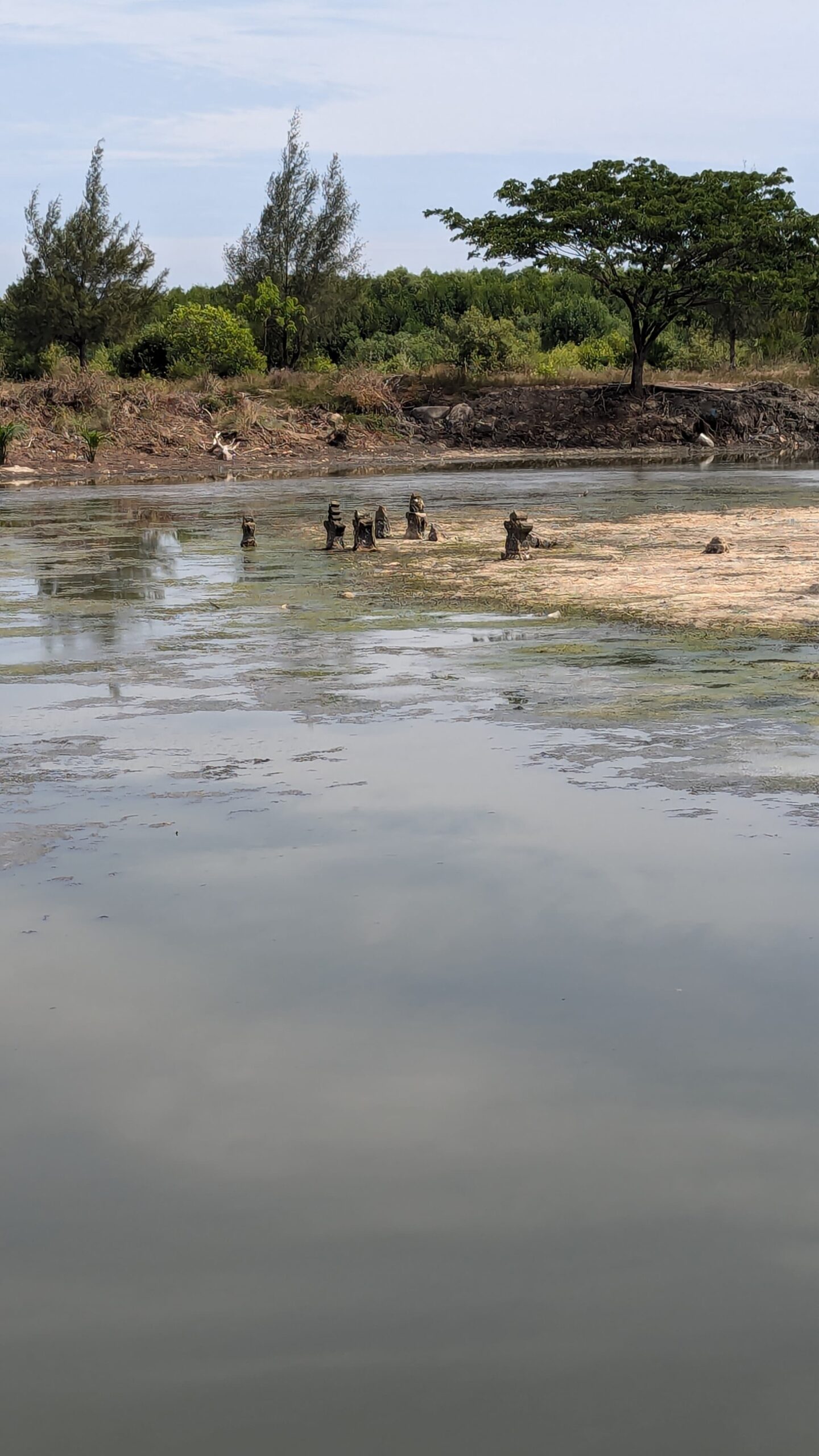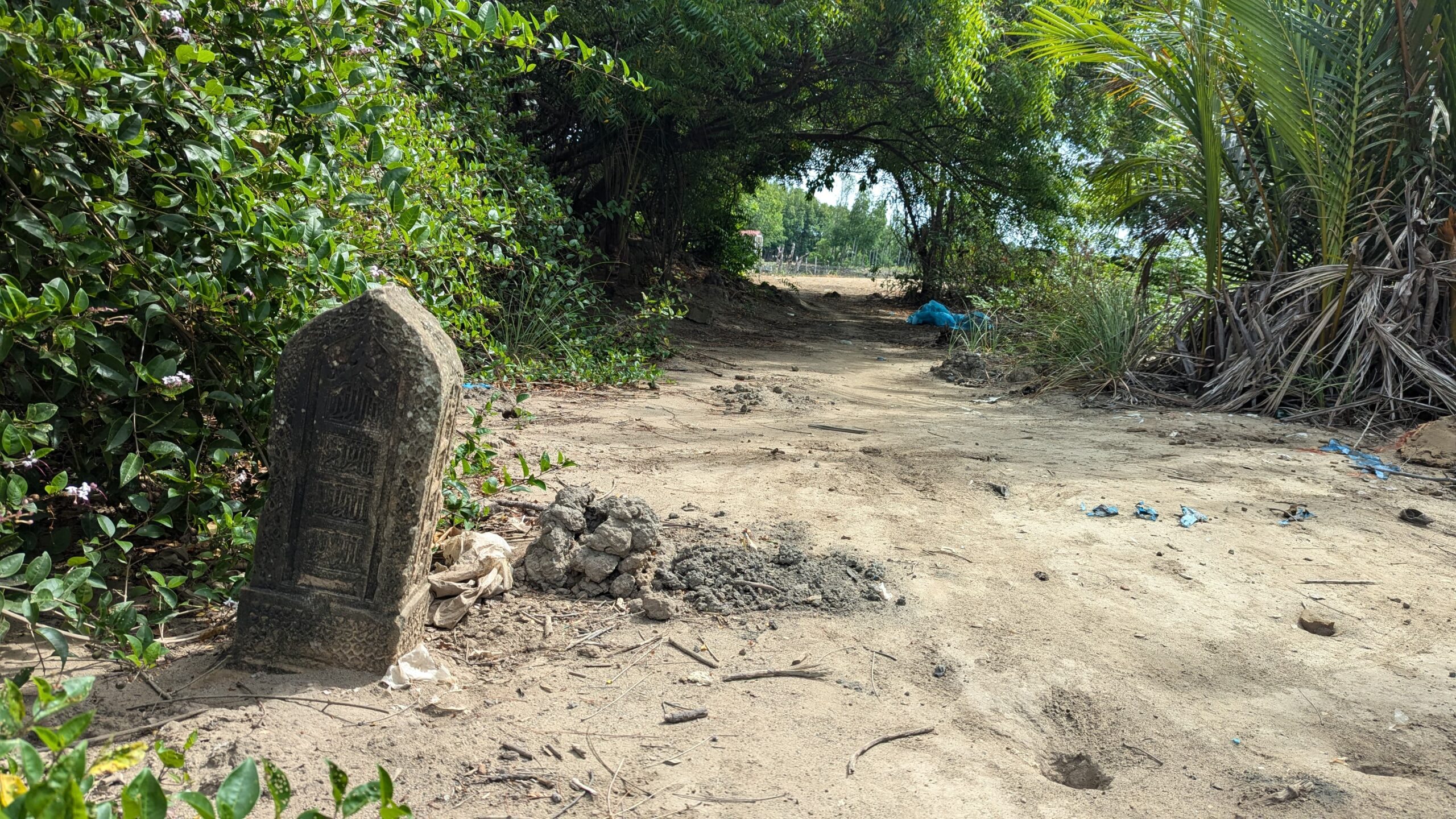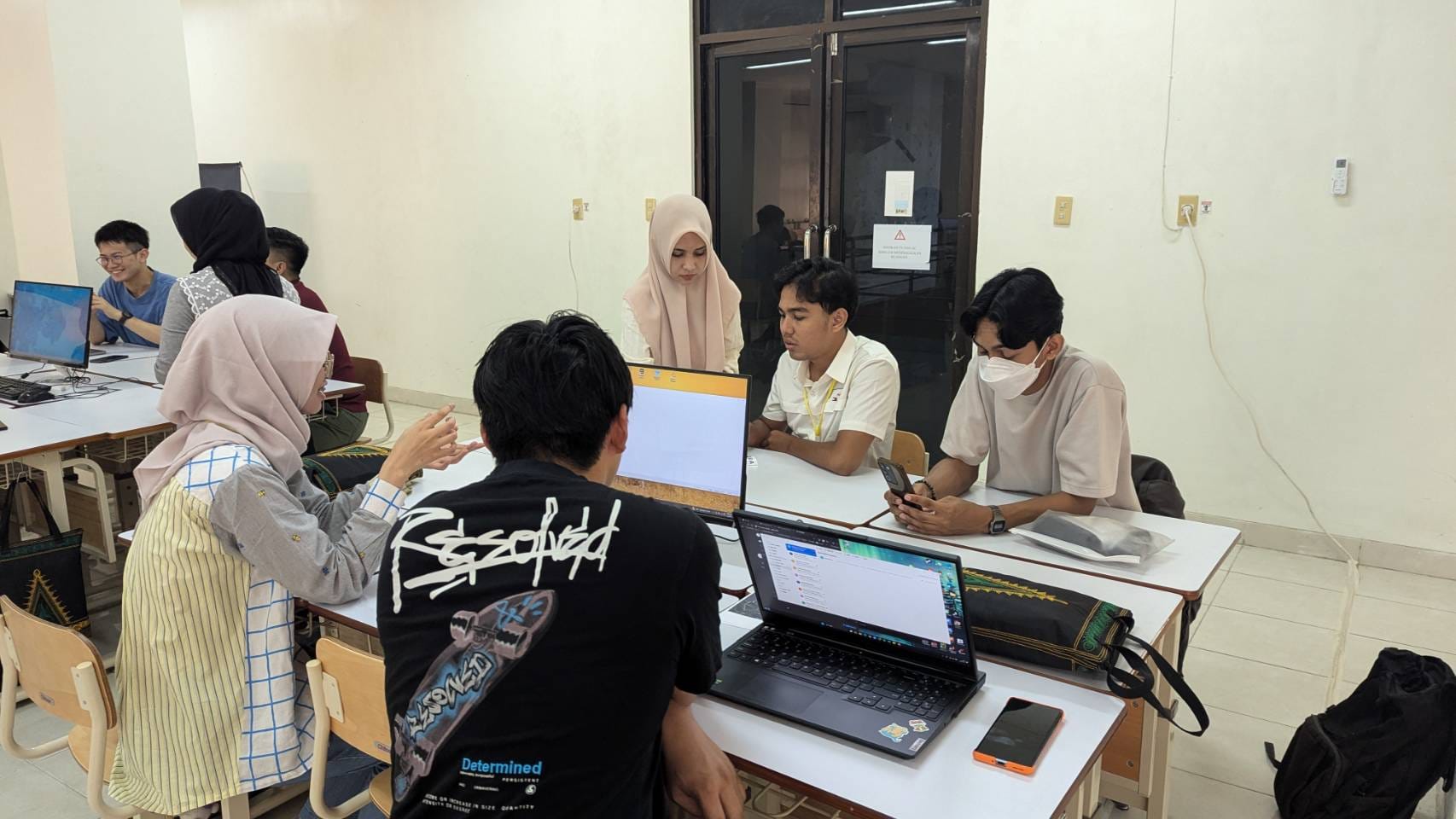Theme: Bringing the Past Into the Future: Digital Preservation of Aceh’s Historical Tombstones
Period: April ~ August 2025
-
Online Sessions and Introduction to EBA course: April ~ June, 2025
-
At the Field: July 6th – July 12th
-
Final Presentation (EBA USK Digital Preservation 2025 + EBA Minamata 2025 Fieldwork participants) (Online): 18:15 (UTC+9)~, August 26th YouTube link: https://www.youtube.com/watch?v=_FLCUEWBHsA
Participants (16 students, 10 Host University members, 5 EBA Team members):
Indonesia
Hasanuddin University (UNHAS)
-
-
Andi Siti Aisyah Amin (Department of Engineering, Informatics Engineering)
-
Institut Teknologi Bandung (ITB)
-
-
Gita Maharsi Kusumawardhani (Faculty of Art and Design, Fine Arts Department, Art Research Specialization)
-
Syiah Kuala University (USK)
-
-
M Basayev Risti (Faculty of Teacher Training and Education, History Education)
-
Mekadina Adisa Rahmatillah (Faculty of Teacher Training and Education, History Education)
-
Nasywa Salsabila (Faculty of Teacher Training and Education, History Education)
-
Universitas Sam Ratulangi (UNSRAT)
-
-
Inrya Gloria Difa Walalangi (Faculty of Engineering, Informatics Engineering)
-
Japan
Keio University (KEIO)
-
-
Mori Haruka (Political Science, Faculty of Law)
-
Muhammad Fajrur Rahmat (Graduate School of Media Design, Doctoral Program)
-
Shohei Ishibe (Library and Information Science, Faculty of Letters)
-
Malaysia
University of Malaya (UM)
-
-
Zhang Shikai (Faculty of Engineering)
-
Myanmar
University of Computer Studies, Mandalay (UCSM)
-
-
Khin Than Thar (Computer Science)
-
University of Computer Studies, Yangon (UCSY)
-
-
Thiha Sit Naing (Computer Science, Business Information Systems – BIS)
-
Bangladesh
Bangladesh University of Engineering and Technology (BUET)
-
-
Minhazul Hasan (ICT, Institute of Information and Communication Technology – IICT)
-
Philippines
University of the Philippines Diliman (UPD)
-
-
Mike Aaron Olaget Capsuyen (Bachelor of Sports Science, College of Human Kinetics)
-
Vietnam
Hanoi University of Science and Technology (HUST)
-
-
Phạm Thị Hương Quỳnh (Data Science, Master’s Program)
-
VNU Vietnam Japan University (VNU-VJU)
-
-
Vũ Thu Ba (Japanese Studies, Faculty of Interdisciplinary Social Sciences)
-
Fieldwork Host
Syiah Kuala University (USK)
Fieldmaster and Organizer:
-
Rahmad Dawood (Department of Electrical and Computer Engineering, Faculty of Engineering)
Fieldmasters:
-
Maya Fitria (Department of Electrical and Computer Engineering, Faculty of Engineering)
-
Husaini Ibrahim (Department of History Education, Faculty of Teacher Training and Education)
Supporters:
-
Ahmad Zakiyyul Fikri (Department of Electrical and Computer Engineering, Faculty of Engineering)
-
Siti Zahra Shofia Rahma (Department of Computer Engineering, Faculty of Engineering)
-
Rezy Septianda (Department of Electrical and Computer Engineering, Faculty of Engineering)
-
M. Raul Al-Haq (Department of Electrical and Computer Engineering, Faculty of Engineering)
-
Aura Lativa (Computer Engineering, Faculty of Engineering)
-
Stefhani Alba Siregar (Faculty of Natural Sciences and Mathematics)
-
Muhammad Raja Al Sahhaf (Computer Engineering, Faculty of Engineering)
EBA Team
-
Fathima Assilmia (Keio University Global Research Institute)
-
Leandro Navarro Hundzinski (Keio University Global Research Institute)
-
Eliko Akashi (Keio University Global Research Institute)
-
Kiyoko Itagaki (Keio University Global Research Institute)
-
Goki Miyakita (Keio Museum Commons)
Summary:
In this program, participants learned and utilized the EBA method, practicing Data Collection, Data Analyzation, Data Visualization, and Storytelling. During the fieldwork, participants learned about the critical importance of preserving cultural and historical artifacts, utilizing digital technology to foster innovative solutions for preservation. The focal point of the field was the Aceh’s historical tombstones, in Banda Aceh, a capital city on the northern tip of Sumatra, Indonesia. Aceh’s historical tombstones are currently at risk due to adverse environmental conditions and lack of care. The fieldwork demonstrated the importance of preservation and understanding the impact of several elements required for successfully conducting preservation: historical studies, documentation, raising public awareness and promoting research to ensure their cultural longevity.
Participants learned about the field while investigating and aiming to propose evidence-based solutions to the following issues:
- Preservation Challenges of Physical Artifacts: Physical artifacts in the Asia-Pacific often require on-site preservation, making relocation and study difficult. Their undocumented state and need for local safeguarding create logistical barriers to long-term protection.
- Threat of Neglect: Environmental damage and climate change pose serious risks to poorly maintained artifacts. With many in critical condition, proactive preservation is vital to prevent irreversible cultural loss.
- Need for Awareness: Lack of public and academic attention threatens the heritage of underserved regions. Increasing visibility and accessibility of information is key to building support and collaboration.
- Sustainability and Heritage Preservation: Digital preservation offers a sustainable solution for protecting and sharing cultural artifacts, enhancing access for research, education, and public engagement.
To work together and aim to provide solutions to these challenges, participants had access to different types of technologies to support their field activities. They utilized 360 technology to capture the broader landscape and scenario, drone to have a high view of the areas, 3D scanning to capture the models of Aceh’s Royal Tombstones, and other more traditional technologies, such as photography and audio recording. With the assistance of local supporters from Syiah Kuala University, students were able to quickly learn new technologies and incorporate them on their learning of the importance and possibilities of digital preservation.
